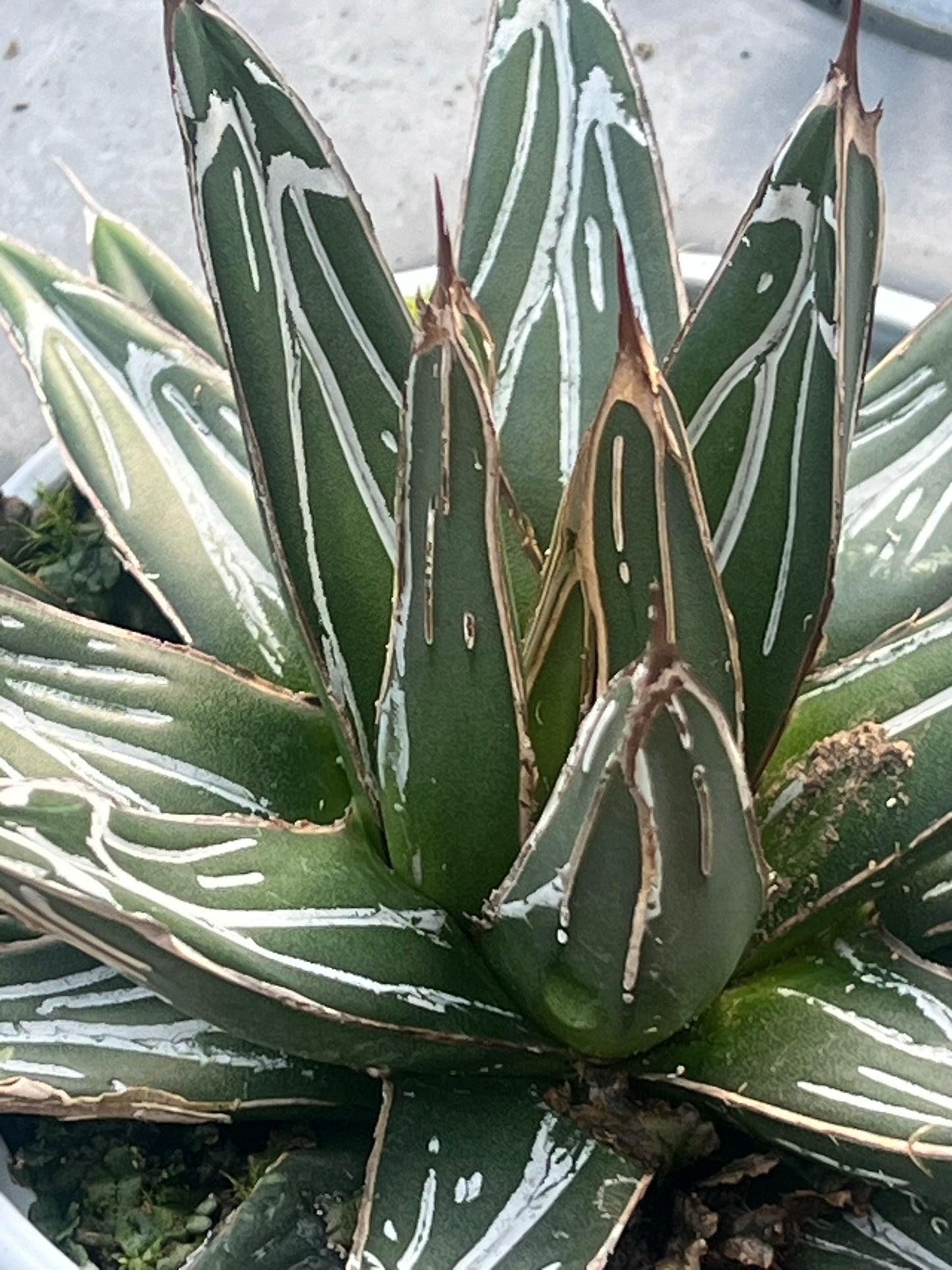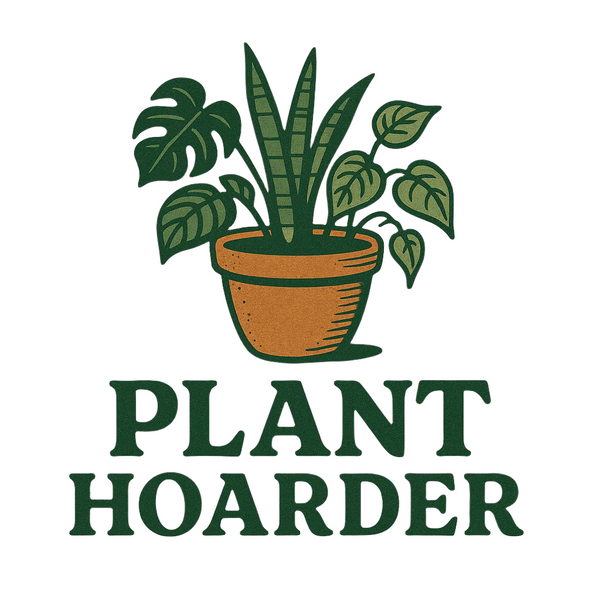Plant Hoarder
Agave, Porcupine
Agave, Porcupine
Couldn't load pickup availability
Share
Hardiness Zone:7, 8, and 9
Sun Exposure:Full Sun
Agave ‘Porcupine’
Spiky Drama. Drought Power. Desert Charm.
Agave ‘Porcupine’ is one of those plants that stops you in your tracks. It’s sharp. It’s sculptural. And yes—it really does look like a desert porcupine. With its tightly packed leaves, fierce spines, and dramatic form, this is a showpiece agave you’ll never regret adding to your collection. But don’t be fooled by its wild appearance—this beauty is surprisingly easy to grow.
Let’s dive into what makes Agave ‘Porcupine’ so special, and exactly how to grow and care for it like a pro.
🌵 What Makes Agave ‘Porcupine’ So Unique?
Agave ‘Porcupine’ is a compact, symmetrical rosette-forming succulent that commands attention. Its thick, blue-green to gray-green leaves are edged with vicious black spines, and each tip ends in a sharp, wicked point. The spines often curve slightly—just like the quills of its namesake animal.
But the drama isn’t just in the danger. The beauty is in the geometry. Every leaf is placed with near-perfect symmetry, forming a tight, dense shape that looks like an art installation made by nature.
Mature plants typically reach 2 to 3 feet tall and wide, making them a great fit for both containers and dry gardens. This plant is not just beautiful—it’s tough.
☀️ Sunlight: Bring on the Brightness
Agave ‘Porcupine’ thrives in full sun.
-
Give it 6 or more hours of direct light each day.
-
If grown in part shade, it will survive—but the color won’t be as bold, and the form may loosen.
-
Indoors, place it in the sunniest window you have—south- or west-facing is best.
Bright light keeps this plant tight, compact, and colorful.
🌱 Soil: Drainage Is Everything
Agaves don’t like wet feet. Fast-draining soil is non-negotiable.
-
Use a cactus/succulent mix or amend potting soil with sand, perlite, or pumice.
-
In-ground plantings? Mix in gravel or crushed granite to keep things dry.
-
Raised beds and mounds can also help keep the roots happy in wet climates.
If water pools around the base, it’s not in the right spot.
💧 Watering: Low and Slow
Agave ‘Porcupine’ is highly drought-tolerant. It’s built to survive long dry spells.
-
Let the soil dry out completely between waterings.
-
In summer, water every 10–14 days if there’s no rain. In winter, maybe once a month, or even less.
-
In containers, check the drainage—roots must never sit in water.
Overwatering can lead to root rot, so when in doubt—don’t water yet.
🌡️ Temperature & Cold Hardiness
Agave ‘Porcupine’ is heat-loving, but can also tolerate cold better than many agaves.
-
Cold hardy down to around 15–20°F (-9 to -6°C) once established.
-
Hardy in USDA Zones 8b to 11.
-
If you live in a cooler zone, grow it in a pot and bring it indoors during winter freezes.
Wind, snow, and frost are not ideal—but a mature Porcupine can handle an occasional chill.
🪴 Growing in Containers
Agave ‘Porcupine’ is a rockstar in pots. Here’s how to get it right:
-
Use a heavy, wide container—this plant gets top-heavy.
-
Pick one with excellent drainage holes.
-
Fill with a gritty, fast-draining mix.
-
Set it in full sun on a patio, deck, or entryway.
-
Bring it indoors or protect it if temperatures dip too low in winter.
Bonus tip: Container plants dry out faster than in-ground ones—monitor moisture carefully.
✂️ Care and Maintenance
This agave is about as low-maintenance as it gets.
-
No need for regular pruning.
-
Remove any dead or damaged leaves by cutting them at the base.
-
Clean up the area around the plant to avoid hiding places for pests.
-
Fertilize once a year in spring with a cactus fertilizer, if at all.
It grows slowly—so enjoy the long-lasting, sculptural display with almost no effort.
🌸 Will It Bloom?
Yes—but only once.
Like most agaves, ‘Porcupine’ is monocarpic. That means it blooms once—usually after 10–15 years—and then the main rosette dies.
But before it goes, it puts on a massive show: a tall flower stalk (up to 10 feet or more) with yellow blooms that attract bees and hummingbirds.
The good news? It often produces offsets (pups) around the base to continue the legacy.
🐛 Pests & Problems
Agave ‘Porcupine’ is tough, but still needs some awareness:
-
Agave Snout Weevil – the biggest threat. This insect can burrow into the core, causing collapse. Inspect plants regularly, especially older ones.
-
Root Rot – caused by poor drainage and overwatering.
-
Occasionally, mealybugs or aphids may appear. Treat with neem oil or insecticidal soap.
A healthy, dry, sun-drenched plant is the best defense.
🌵 How to Use It in the Landscape
Agave ‘Porcupine’ brings drama to almost any setting:
-
Focal point in rock gardens or xeriscapes
-
Perfect partner for gravel paths, boulders, and desert grasses
-
Looks stunning in modern minimalist designs
-
Combines beautifully with other succulents or low-water perennials
-
Use in a container as a sculptural element on a sunny patio or entryway
Wherever you place it, it demands attention.
🧡 Why People Love Agave ‘Porcupine’
There’s a lot to admire about this spiky masterpiece:
-
Bold, compact, and eye-catching
-
Handles heat, drought, and tough conditions
-
Very low maintenance
-
Great for both ground and container growing
-
Unique leaf form with fierce personality
It’s a plant that says, “I’m here, I’m fierce, and I’m fabulous”—without asking you to lift a finger once it’s settled in.
Agave ‘Porcupine’ isn’t just a plant—it’s a statement piece. It’s for the gardener who appreciates bold forms, powerful presence, and the magic of nature’s own architecture. With the right spot and a little patience, it will reward you with years of beauty, strength, and maybe—if you’re lucky—a breathtaking bloom.


